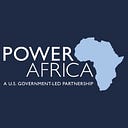Translating Policy into Action
Supporting Women and Girls’ Equitable Participation in the Energy Sector
With nearly ¾ of the region’s national energy frameworks addressing gender-energy linkages, sub-Saharan Africa is a regional leader in working gender considerations into energy policy-making and planning. This 2017 analysis found that sub-Saharan Africa outperformed all other regions and exceeded the global average of 32%.
International Women’s Day 2018 is an opportunity to recognize how the objectives of these sub-Saharan energy frameworks are translated into action across the continent.
At the regional level, the ECOWAS Centre for Renewable Energy and Energy Efficiency (ECREEE) developed the ECOWAS Directive for Gender Assessments in Energy Projects in 2017, with the support of Power Africa and the U.S. Clean Energy Solutions Center of the National Renewable Energy Laboratory (NREL). The Directive aims to ensure that vulnerable and marginalized populations are included as both beneficiaries of and participants in the energy sector. This includes guidance to ensure that any adverse impacts on women and men resulting from the project are recognized, avoided and mitigated. The strength of this directive is that its mandates can be enforced at the national level, to the degree that ECOWAS members have recognized ECOWAS law within their national systems. Implementation of this directive is well underway; only a few months after its approval, local NGOs and government staff will receive training on how to conduct gender assessments.
Rwanda’s national Energy Policy identifies encouraging girls to study science — for the purpose of building their knowledge of energy technologies and engineering — as a measure to mainstream gender in all national-level energy policy planning. To carry out this national objective, the government of Rwanda has begun developing activities to encourage STEM education, including partnering with the private sector to provide and award scholarships.
Kenya’s National Energy Policy aims to enhance gender considerations in all energy planning and development, including addressing women’s underrepresentation from the institutional to the community level. This policy has guided the design and implementation of different initiatives to boost women’s participation in the energy sector. For example, the Kenya Power and Lighting Company (KPLC), a state-owned utility that serves the entire country, is participating in USAID’s Engendering Utilities program, which seeks to increase the professional participation of women in the company by improving recruitment paths for women and providing them with mentorship and professional development opportunities.
Additionally, Power Africa’s recently published “Guide to Community Engagement for Power Projects in Kenya” helps to achieve Kenya’s objective to equitably include women in energy-sector planning at the community level by providing developers with a tool to strengthen community involvement in the project development process. The guide offers resources on how to responsibly engage women as stakeholders and beneficiaries to ensure that women’s needs are addressed in the project development process.
As we celebrate International Women’s Day 2018, we invite you to join the Women in African Power network and help us further promote women and girls empowerment in Africa’s energy sector. For more information, please contact Denise Mortimer (dmortimer@usaid.gov)
To learn more about Power Africa’s gender mainstreaming work, see our related blog on Building a Better Business through Gender Inclusivity.
